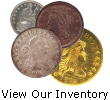Gold breaks $400. Incredible.
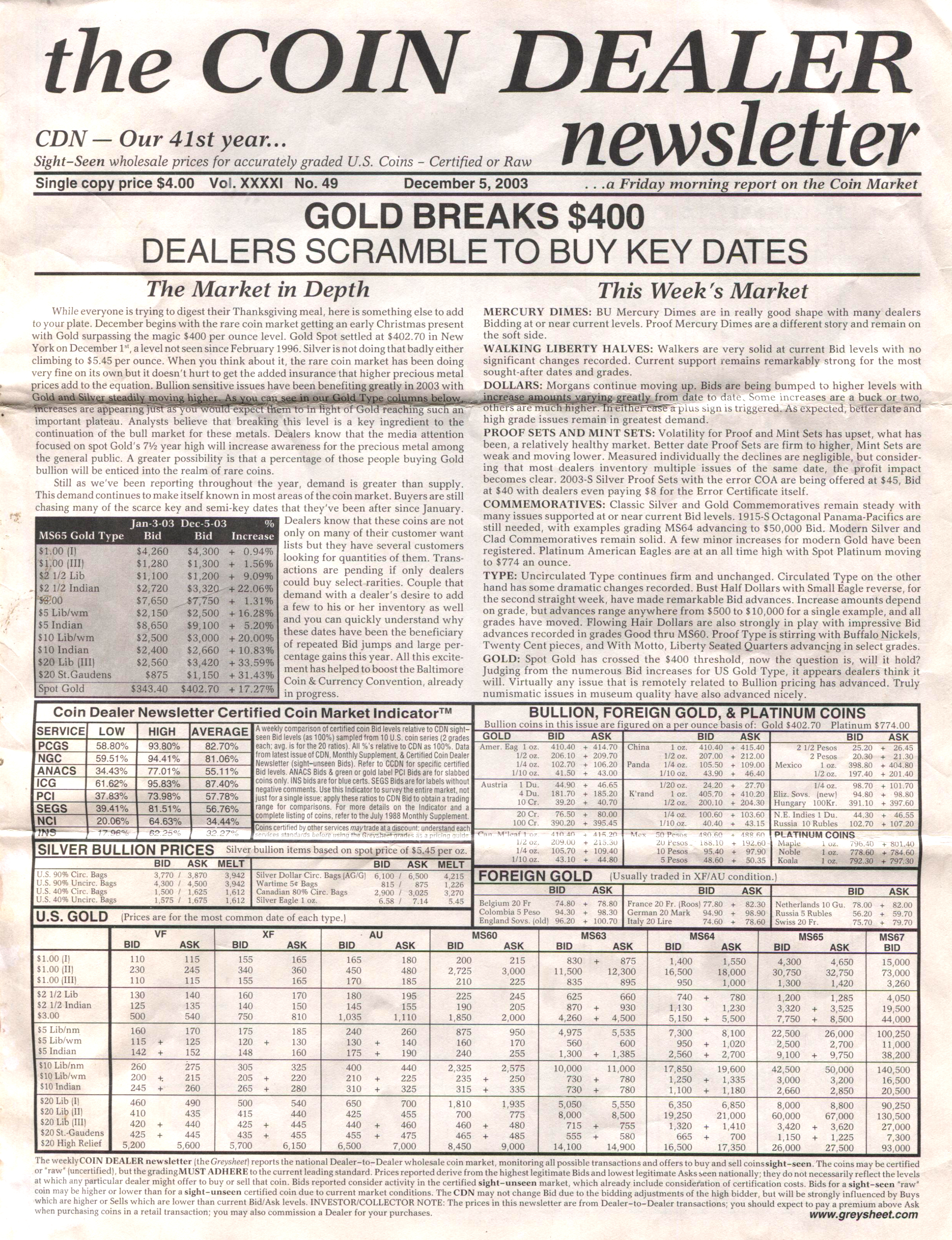
P.S. And silver was $5.45!
The following was written by Frank.
Francis LeRoy Henning was a notorious counterfeiter of U.S. coins and currency based out of Erial, New Jersey. Henning began his counterfeiting career in the 1930s, when he printed $1 silver certificates. The Secret Service caught up to Henning and he was arrested in Boston in 1939. This would not be the last arrest for Henning.
Henning is more remembered for the hundreds of thousands of nickels that he counterfeited in the 1950s. Henning counterfeited Jefferson Nickels dated 1939, 1944, 1946, 1947, and 1953; these are referred to as Henning Nickels. In 1954, Henning purchased a large quantity of the alloy needed to make his counterfeit coins from the Scovill Manufacturing Company, which just so happened to be the same supplier of the U.S. Mint. Henning had rented a building in Erial, NJ where he used his DIY coin press to strike counterfeit nickels.
Henning would have likely gotten away with his scheme, except for a major blunder. In 1942, the U.S. Mint changed the composition of its nickels from a cupronickel alloy to a copper, silver, and manganese alloy as nickel was needed for wartime purposes. All of these new “silver nickels” have a large mintmark above Monticello on the reverse. Henning either neglected this key detail or was oblivious to it, as his 1944 dated nickels were not of the same composition, nor did they have a mintmark above Monticello. Another identifying factor for many Henning Nickels is the R in Pluribus on the reverse. Many Henning Nickels will have a hole in the lower left side of the R in Pluribus.
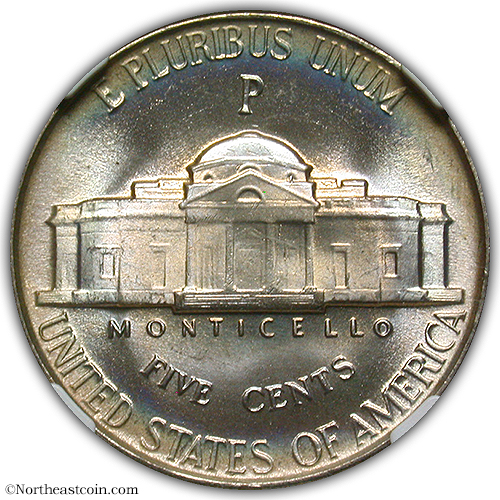
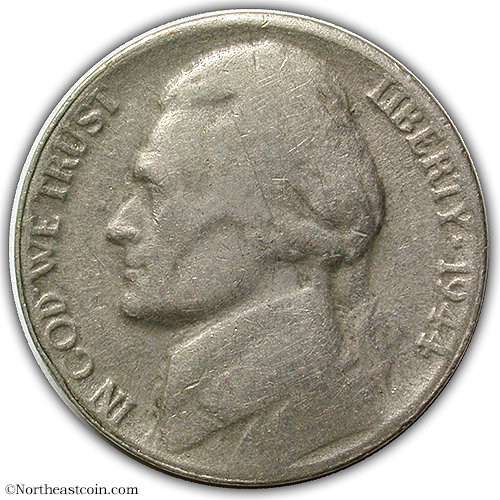
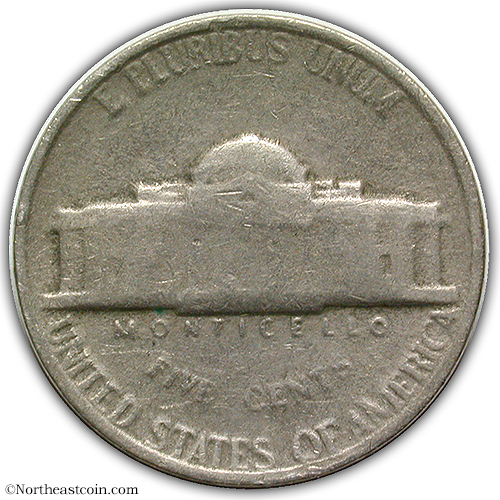
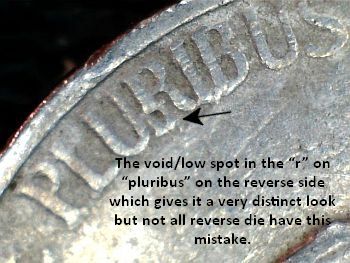
Image courtesy of Error-Ref.com
Henning claimed that he had deposited $5,000 worth of his nickels into various banks and posed as an owner of vending machines to not cause any suspicion. Henning must have caught wind that the authorities were after him, so he dumped approximately 200,000 nickels in Cooper’s Creek in New Jersey and another 200,000 nickels in the Schuylkill River in Pennsylvania. Just 40,000 of these nickels were recovered. These 40,000 nickels were melted down and coined into legitimate nickels by the Mint.
In October of 1955, Henning was arrested. He was sentenced to 3 years in jail and a $5,000 fine. But, when the judge found out that Henning had also planned to counterfeit $5 bills, he added an additional 3 years to his sentence.
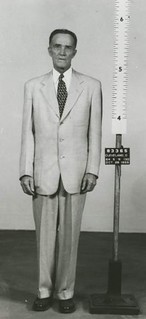
Image courtesy of Newman Numismatic Portal
Henning nickels have grown in popularity and increased in price over recent years as more people are learning about this thrilling story.
Sources:
https://books.google.com/books?id=460uAAAAMAAJ&printsec=frontcover#v=onepage&q&f=false
https://www.winsociety.org/newsletter/vol-11/henning-nickel.html
https://www.error-ref.com/henning-counterfeit-nickel/
https://coinweek.com/a-collectible-counterfeit-the-story-of-henning-nickels/
https://blackcatmining.com/blogs/reference/henning-counterfeit-nickel
This year, I was able to procure a 1944 Henning nickel. Because it's a counterfeit coin is it legal to sell them or even own one? Inquiring minds want to know.
We do not actually know. That said, these trade regularly on eBay. Also, ICG certifies them. We are comfortable buying and selling them, since they are not being sold in an attempt to defraud anyone.
The following was written by Chris.
After calling the decision to host this year’s ANA in Oklahoma City perplexing (see my ANA show report at www.northeastcoin.com/servlet/DisplayBlogEntry?blogId=342), I thought about where I would like to see the ANA held. I miss the old days when it was in a different location each year.
I decided to do a top three list. I also asked the others here who travel to the shows (Tom, Brian, and Frank) where they would like to see the show held and why. And I decided I would rank our selections using the five C’s of coin show locations (I just made that up): Convenience, Cost, Coolness Factor, Collector Base, and Climate. Here are our entries:
Tom
Chicago (Rosemont)
“I would say Chicago on a semi regular basis something like every other year or two years in a row then go elsewhere. There is no real coolness factor but it checks off all the other boxes for convenience, cost & collector base.”
Boston
“Boston next choice it was 28 years between the last two ANA shows 1982 & 2010. Thats too long for a show that proved to be a popular choice among dealers & collectors . Sure it’s expensive but so are all cities. It’s also a major city with easier access for world dealers. It’s where it all started some 250 years ago! It also all started for us Northeast some 60 years ago also!! That should be good enough reason for this smart choice alone :-)”
Miami
“Miami as the next choice, it’s been something like 50 years since it was last held there.”
New York (I asked for three, but that’s okay, he’s the boss)
“Let’s go back to New York City, it’s been too long since an ANA (or any major show) has been held in this forever popular location. These two locations (see Miami above) certainly factor high in convenience, coolness factor (we are not talking climate here) & collector base. As for cost yes both are expensive for sure but again going into any major show this will be the case.”
Frank
Austin
“I would like to see an ANA show located in Austin, as it has been growing exponentially over recent years. Austin has seen an influx of young professionals in the tech industry as of recently.
Having the largest coin show of the year in Austin could help attract the younger crowd who may have some discretionary income to the Hobby of Kings: coin collecting. Austin is also relatively close to Dallas, San Antonio, and Houston. Having the largest coin show of the year in Austin would be quite fitting, as everything is bigger in Texas!”
Las Vegas
“I’d also like to see an ANA show in Las Vegas, Nevada. Vegas is an immensely popular tourist city for domestic and international travelers; this fact alone would attract those who may not typically travel to large coin shows. I’m sure that if the ANA decided to have a show in Vegas, the public turnout would be quite high compared to recent shows.”
Washington, D.C.
“My last pick for an ANA show would be Washington, D.C. This would be a prime location for the largest show of the year as D.C. is relatively close to other major east coast cities: Boston, New York City, Philadelphia, Baltimore, and Richmond, just to name a few.
While there is a show in Baltimore a few times a year, many collectors and dealers do not feel safe traveling to Baltimore.
Dealers and collectors would also have the opportunity to visit the Smithsonian’s numismatic exhibit which consists of many of the rarest coins and currency in existence. This would serve as a great educational opportunity for collectors and dealers alike.”
Brian (I don’t think he was very interested in participating in this)
Rosemont
“I really like Rosemont. Seems like shows seem to do quite well there.”
New York City
“Then I would like to see New York City. This could add a little excitement and a massive collector base.”
Dallas
“And I like Dallas as a 3rd choice for those reasons as well.”
Chris
New Orleans
Because it’s New Orleans.
San Diego
Partly because I’ve never been there as an adult and just want to see it again! The weather is perfect. I’m thinking it might have a decent collector draw. Being a major city, travel shouldn’t be too big of an issue, at least for U.S. based dealers. I realize this puts a burden on European dealers attending.
Charlotte
95% due to selfish reasons. I have a daughter that goes to school in the area, and other family nearby also. It’s painfully easy to get to for us, and probably not too difficult for most dealers. I would be curious as to the collector draw. It could be pretty decent. And if it was a very successful show, maybe the Baltimore show organizers would consider moving their show to Charlotte.
Okay, here are my five C ratings for everyone’s selections. One is bad, five is great.
Chicago/Rosemont
Convenience: 4
Cost: 4
Coolness Factor: 1
Collector Base: 4
Climate: 3
Boston
Convenience: 4
Cost: 1.5
Coolness Factor: 5 (Perhaps some bias here)
Collector Base: 4
Climate: 4
Miami
Convenience: 4
Cost: NS (I have no idea)
Coolness Factor: 4.5
Collector Base: 4
Climate: 2
New York
Convenience: 5
Cost: 1
Coolness Factor: 4
Collector Base: 5
Climate: 3
Austin
Convenience: 2
Cost: NS (I have no idea…possibly a 4?)
Coolness Factor: 4
Collector Base: 3
Climate: 2
Las Vegas:
Convenience: 4.5
Cost: 4
Coolness Factor: 3
Collector Base: 4
Climate: 1
Washington, D.C.
Convenience: 4.5
Cost: 3 (Kind of guessing)
Coolness Factor: 4.5
Collector Base: 4
Climate: 3
Dallas
Convenience: 5
Cost: 3
Coolness Factor: 2
Collector Base: 4.5
Climate: 2
New Orleans
Convenience: 2
Cost: 3.5
Coolness Factor: 10
Collector Base: 1.5 (Smallest city on the list with very little metro area)
Climate: 1
San Diego
Convenience: 3.5
Cost: NS (Probably high)
Coolness Factor: 4
Collector Base: 3.5
Climate: 5
Charlotte:
Convenience: 3.5
Cost: 4
Coolness Factor: 2.5
Collector Base: 3
Climate: 3.5
We welcome YOUR input! Where would you like to see the ANA held? And feel free to tell us why.
The following was written by Chris.
I’d like to write a memoriam for a friend of mine that passed away last year. At the summer 2024 ANA in Rosemont, I received a (admittedly not completely unexpected, but nevertheless devastating) phone call from the lovely wife of a long-time friend and colleague of mine. His name was Eric. Eric had battled an illness for a few years that eventually took his life.
I met Eric way back in 2002, when I first started working for Tom and Northeast Numismatics. Eric was a coin collector, and prior to my involvement with Northeast, he and Tom had met at a local coin show. They came up with an arrangement where Tom would work with Eric on his collection, and Eric would develop a web presence for the company at a steeply discounted rate.
Being diet tech-savvy, as soon as I started working for Northeast, I met and started working with Eric on Northeast’s website. Eric was a high-level developer. Our website was just a very simple side-project of his. He and I clicked immediately. As we started to develop the website from a static two-page site to something more robust, we were always on the same page with ideas. I honestly don’t know how he found the time to do his full-time job, raise three kids with his wife, AND work on our site.
Eric and I didn’t just click on a professional level, we became personal friends. I recall several late nights online gaming with each other (any of you gaming nerds remember Diablo?). He got me into the (somewhat expensive) hobby of RC cars and trucks. He had an incredible RC race track in his backyard. My wife and I would go visit Eric and his family on occasion for pool parties, and while the ladies were being grownups, Eric and I took to the race track.
As I mentioned, Eric was a coin collector. It was a true pleasure helping him build his collection over the years. We had pretty much the same eye/taste for coins, which made it even more fun. Occasionally he would come to the office to talk web work, then once done he’d peruse through our boxes of unlisted new purchases. As all collectors and dealers alike know, there’s nothing like getting first shot!
I recall when he mentioned to me many years ago that if anything happened to him, he wanted me to be involved in the dispersal of his coin collection. Tragically, that came to be. It’s hard to describe the sadness I felt when I was going through his coins with his wife. I am incredibly honored in the trust that Eric had and his wonderful wife has in me. Several of his coins have already found homes with other collectors, and I’m sure Eric would be very happy about that.
I miss you, my friend.
Well done, and very moving, Chris.
Thanks so much for reading this, Dave, and for the kind words.
Thanks for sharing the story Chris. That is one of the neat thing about coin collecting. It sounds like it was a perfect match.
The type of dealer you are helps a lot. I came across you over 13 years ago. I can still remember the time you were able to take a quick lunch break with me during a very busy show.
Keep doing what you are doing.
I really appreciate that, Tom. And thanks very much for reading.
The following was written by Chris.
We attended the annual ANA World’s Fair of Money in Oklahoma City last week. Ok, let me get this out of the way. The decision to host the biggest coin show of the year in a city that is relatively inaccessible from many major cities was perplexing. The airfare there was the most we have spent as a company…ever. And more importantly, there were significant increases in security concerns during the trip there and back due to having to make connections. The main hotel for the event was very expensive, though I will say that those of us (yours truly included) that stayed elsewhere got fairly reasonable rates.
I have almost zero input to provide for the city itself, as my time was limited to walks from my hotel to the convention center, and the time I spent in the convention center. Dinner every night was Grubhub to my hotel room. Good times. I regret not being able to see what OKC had to offer. I will say that that the walk from my hotel to the show was convenient and felt safe. The convention center itself was great. The Oklahoma heat was intense, but I spent the previous weekend in New Orleans (different heat, but still heat), so I dealt with it fine, particularly considering my walk to the show was very short and half of it through air-conditioned spaces.
Time to move on to the show itself. There were a couple of dealers with whom I do regular coin show business that did not attend due to the location. The world coin dealer attendance seemed soft to me, and it was probably because of the location and associated costs. As for the regular wholesalers and dealers that were there, I was definitely pleased with what I was able to buy from them. If you combine what Tom, Frank, and I bought at the show, it’s probably the biggest buying show we’ve had. As for sales, it was definitely the best show we’ve had in many years. I saw no weakness in the market in the areas in which we deal. Obviously, ugly/low-end coins sell at discounts, and pretty or PQ coins command strong premiums.
I’m not sure how public attendance turned out. It was definitely not overwhelming, although to be fair, I left Thursday night. Perhaps it picked up Friday and Saturday, as it’s easier for working folks to attend on those days. I did have the pleasure of seeing a couple of our regular customers, as well as meeting one of them for the first time (shout-out to Mike from Norman!).
Next year it’s back to Rosemont, IL. I like the location for the convenience, price, and restaurants in the area. I do wish they’d go back to having it in various cities every year. My issue with the location of this past show aside, it’s nice to see different places.
I said Rosemont in error for next year's ANA show. It is in Pittsburgh for 2026, then back to Rosemont in 2027.
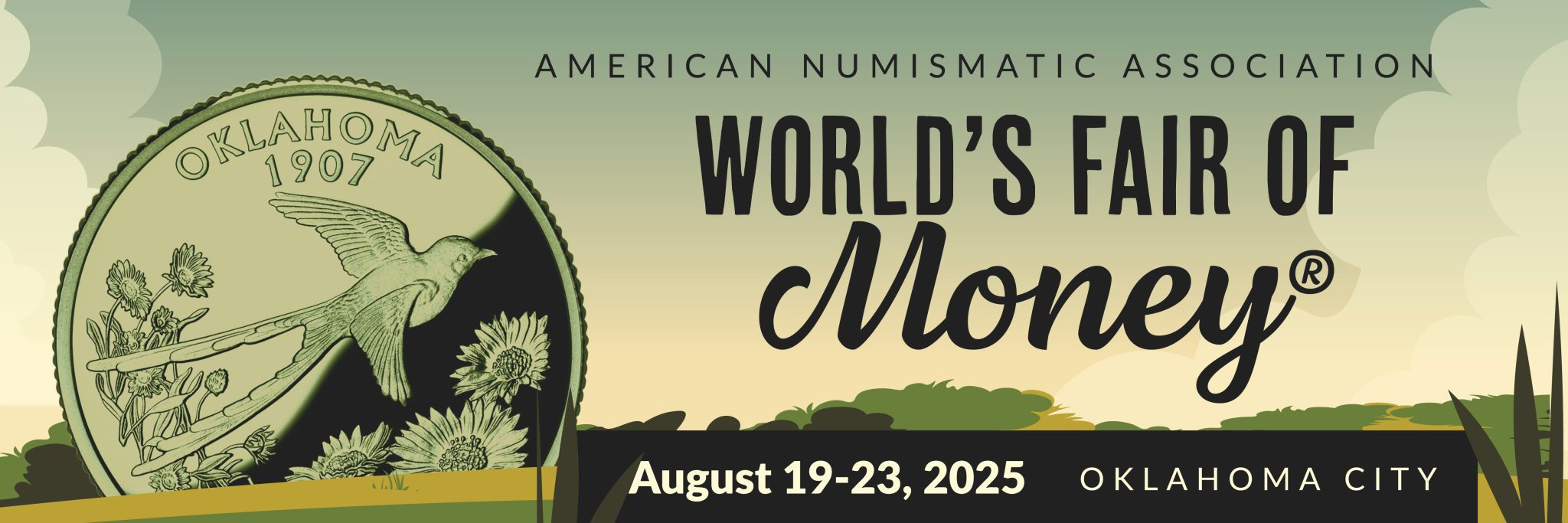
Unless a last minute change was made, the 2026 WFM is in Pittsburgh.
You are correct, Doug. Correction noted, and thanks!
The heat in New Orleans is made so much worse by the high humidity. I swear it was so humid there that fish couldn't tell the difference between the river and land. Never go to NO in July or August. Yankees will suffer greatly.
Lol. Agreed. As a NOLA expat, I knew what I was getting into. Still didn't make it any more comfortable.
Glad to read that your visit to OKC was successful
Thank you!



